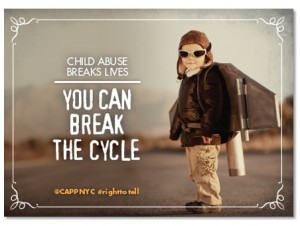Child Safety – Abuse Prevention Tips You Can Start Right Now

Those working with children know keeping kids safe is a 24×7, 365 days a year job! The key to such a challenging calling is prevention. Prevention involves taking action before abuse occurs. Having a good understanding of the tools available for prevention will ultimately increase your level of confidence and provide you with knowledge, which translates into the power to stop abuse.
When parents, guardians and caregivers take the time to educate themselves on abuse and the pre-emptive warning signs, the children become safer.
Listed below are some immediate actions you can take to protect those in your care. They’re simple and effective.
Establish and Communicate Guidelines
- Establish boundaries and communicate everyone’s right to privacy during quiet times, bathroom breaks, and personal activities. Make sure children understand that their “no” means “no” and will be respected.
- Teach about good touch vs. bad touch. Children should know the difference even when dealing with safe adults and people they interact with on a daily basis. It’s helpful if children understand the correct language for their bodies. This helps with direct communication if they have touched been in one of those places.
- Explain the difference to children between keeping secrets and sharing surprises. Secrets exclude others and can make children unsafe. Surprises generate excitement and are revealed in a short amount of time. Make sure children understand it’s never okay for an adult to ask a child to keep a secret.
Warning Signs – What to Look For
- Inappropriate behaviors in adults and older children may include: showing too much interest in a child, giving gifts to the child and no one else, inappropriate games that include wrestling or tickling, and/or siting on an adult’s lap for any length of time.
- Isolated interactions such as a child being removed from a group by an adult or older youth for discussion or punishment. Interactions should always be visible and within the eye of two or more adults.
Make the Choice to Have a Voice – Start the Conversation
- Speak often and openly about your desire to stop abuse and the steps you’re taking to prevent it from happening – this alone will deter some offenders.
- Rehearse the hard questions so the difficult or embarrassing statements are more direct and come out more naturally. Get comfortable with the uncomfortable. Learn to challenge other adults about inappropriate behaviors.
- Make a habit of speaking and listening openly and honestly. Show others, especially children, you’re willing to listen to whatever they have to say, even if it’s about something they’ve done wrong.
- Report abuse or any behaviors that seem suspect. If you don’t speak up you can’t prevent abuse or stop it.
Have a Plan
- “By failing to prepare, you are preparing to fail.”― Benjamin Franklin
- Whenever possible, put in writing a plan, check list of actions, and resources that you and others can refer to. This helps organize your thinking in stressful situations.
- Teach the children in your care about what to do and who to talk to if they’re in a threating situation.
Always remember…KNOWLEDGE IS POWER and worth sharing!
Resource Links
Safely Ever After – www.safelyeverafter.com
Stop It Now – www.stopitnow.org
Darkness to Light – www.d2l.org
Prevent Child Abuse America – www.preventchildabuse.org
Crimes Against Child Resource Center – www.unh.edu/ccrc
To learn more about improving child safety, additional security tips, and best practices visit the KidCheck blog or connect with us on Twitter, Facebook, Google+, or Pinterest.


